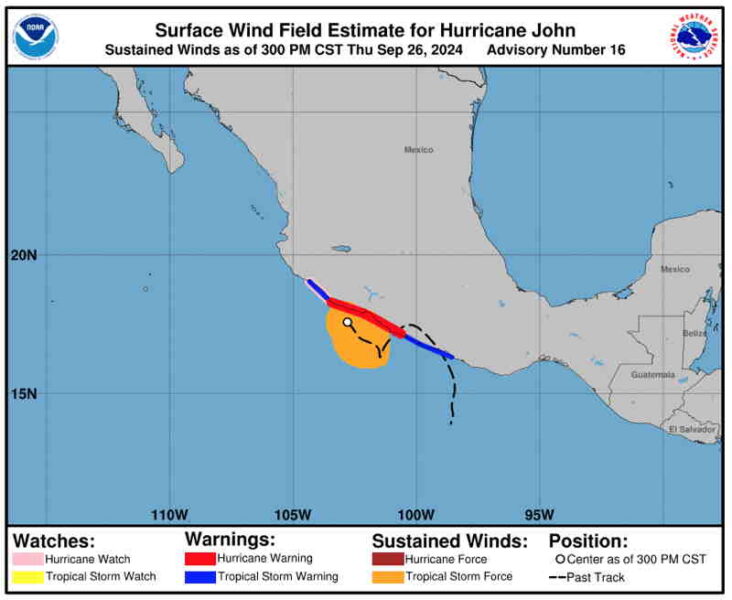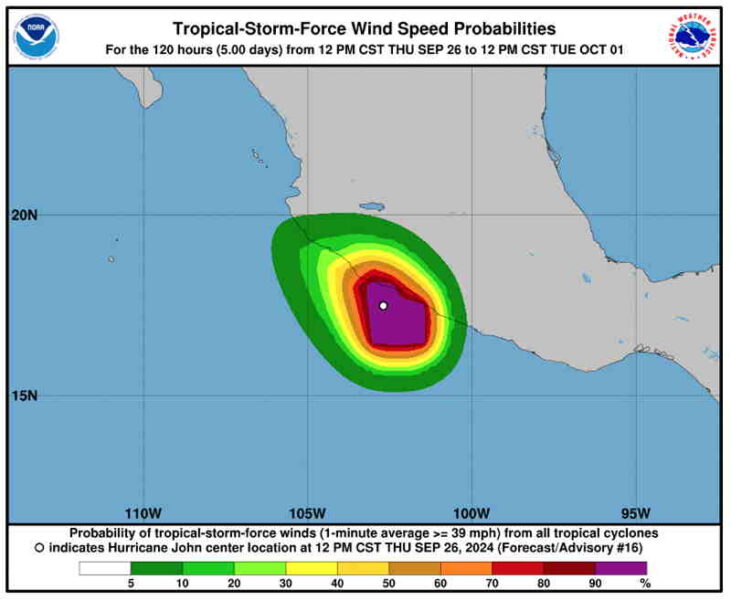
Hurricanes John and Helenes’ Simultaneous Coastal Impact
Imagine going down to your slip on the Bay after 140-mph winds and a storm surge with water levels reaching 10 feet above normal. It’s hard to imagine in Sausalito or San Diego, yet that’s what residents of Florida’s Big Bend region are facing this morning due to Hurricane Helene. The storm and rain have moved inland, though that also means the rivers upstream are filling beyond capacity, so the downstream shoreline will continue to feel the impacts as all that fresh water attempts to reach the sea. According to reports, at least 20 people have died through the flooding, mudslides and destruction.
Also in the Atlantic, Hurricane Isaac is between Bermuda and the Azores, and Tropical Storm Joyce is spinning north in the mid-Atlantic. Along the Pacific coast of Mexico it is Hurricane John that continues to cause damage.

Hurricane John hit the southern coast of Mexico as a Category 3 storm Monday night, causing high winds, storm surge, and heavy rains. It then lost power and moved offshore, where it subsequently re-strengthened back to a Category 1 hurricane while migrating northwest along the coast. It’s now been downgraded to a tropical storm again, but is dumping lots of rain during its slow-moving course as it almost parallels the Mexican coastline.

Acapulco and the Acapulco Yacht Club are still recovering from Hurricane Otis last year. We’ve heard from Ricardo Brockman this morning that while there is lots of rain, causing damage and flooding and blocking streets, the yacht club has fared fine with Hurricane/Tropical Storm John. Other areas along the coast like Zihuatanejo, Barra and other cruising destinations are either facing the storm now, or assessing the damage after its passing.
Researchers continue to follow and evaluate how human-caused global warming is contributing to the evolution of these storms. Yale Climate Connections notes that the US has set a record with eight Cat 4 or Cat 5 Atlantic hurricane landfalls in the past eight years, from 2017 to 2024. The biggest changes include the rapid rate of change in the storms’ intensity, average overall increase in wind speeds, and more water content/rainfall due to warmer air temperatures. All good reasons to sail more and motor less.
